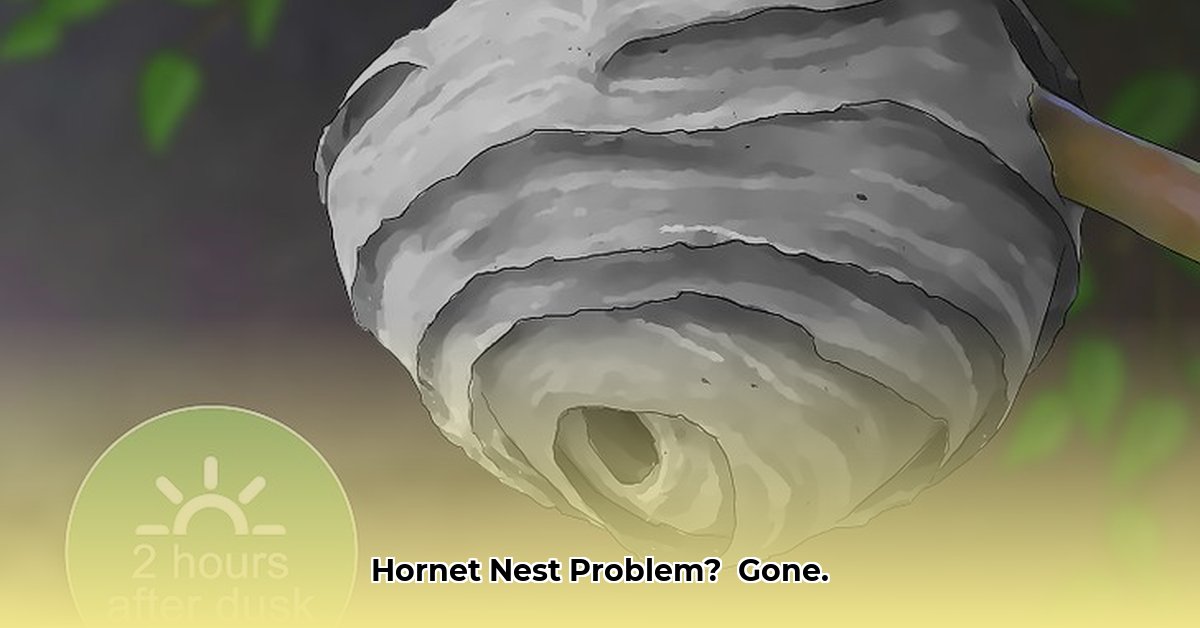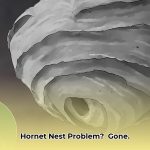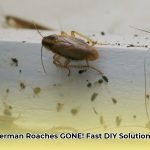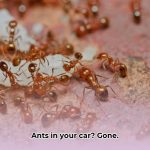Found a ground hornet nest in your yard? Don’t panic! This guide will show you how to handle these stinging pests safely and effectively. Whether you prefer a DIY approach or want to call in the pros, we’ve got you covered.
1. Confirm the Culprit: Is It Really a Ground Hornet?
Before you suit up for battle, make sure you’re actually dealing with ground hornets. Often confused with yellow jackets or cicada killers, ground hornets (which are technically a type of yellow jacket) build nests underground, marked by small entrance holes. Yellow jackets can also nest in the ground, but their entrances are often more concealed. Cicada killers, while large and intimidating, are generally solitary and less aggressive. A quick online image search (ground hornet, yellow jacket, cicada killer) can help you identify the culprit.
2. Locating the Nest: Where Do They Hide?
Ground hornets are masters of camouflage. Their nests are typically located in:
- Dry, sunny areas: Often near the edges of wooded areas or in open fields.
- Loose soil: Sandy soil or areas with patchy grass are ideal for nest construction.
- Abandoned rodent burrows: These provide a convenient pre-made cavity.
Look for small holes in the ground with hornets flying in and out. Important: Observe the nest from a safe distance, preferably early morning or late evening when hornets are less active.
3. Safety First: Gear Up!
Dealing with stinging insects is serious business. Protect yourself with:
- Long sleeves and pants: Tuck your pants into your socks for maximum coverage.
- Thick gloves: Protect your hands from stings.
- Closed-toe shoes: No sandals allowed!
- Beekeeper’s veil (ideal): Or a wide-brimmed hat with netting.
Your safety is paramount. Never approach a ground hornet nest without proper protection.
4. Choosing Your Weapon: Ground Hornet Removal Methods
Here are some options for dealing with ground hornets, ranging from DIY solutions to professional intervention:
DIY Methods (Proceed with Caution!)
- Soapy Water: A mixture of dish soap and hot water poured into the nest entrance can be effective. This disrupts the hornets’ respiratory systems. Repeat applications are often necessary.
- Insecticide Dust: Apply a dust insecticide specifically designed for ground-nesting insects directly to the nest entrance at night. Follow product instructions carefully.
- Traps: Commercial or homemade traps can help reduce the hornet population, but are usually insufficient to eliminate an entire nest.
Important Note: DIY methods carry a risk of stings. If you are uncomfortable or allergic to stings, do not attempt these methods.
Professional Removal: The Safest Option
If you’re hesitant, allergic to stings, or the nest is large or difficult to access, contact a professional pest control service. They have the expertise and equipment to handle the situation safely and efficiently.
5. Post-Removal: Clean Up and Prevention
Once the hornets are gone (no activity for 24-48 hours):
- Seal the nest entrance: This prevents other insects from moving in.
- Dispose of insecticides properly: Follow product instructions.
To prevent future infestations:
- Regularly mow your lawn: This eliminates potential nesting sites.
- Fill in holes and cracks: This removes attractive nesting locations.
- Avoid leaving sweet food and drinks outside: These attract hornets.
6. Sting First Aid: What to Do
Even with precautions, stings can happen. If stung:
- Wash the area with soap and water.
- Apply a cold compress to reduce swelling.
- Over-the-counter pain relievers can help with discomfort.
If you experience any signs of an allergic reaction (difficulty breathing, swelling of the face or throat), seek immediate medical attention.
7. Understanding Ground Hornets: Why Are They Dangerous?
Ground hornets, a type of yellow jacket, are social insects that fiercely defend their nests. Their stings can be painful and, for those allergic to the venom, life-threatening. Multiple stings can be particularly dangerous.
While we know a great deal about ground hornets, research continues to explore their complex behaviors, communication methods, and the composition of their venom. Scientists are even investigating the potential medicinal uses of hornet venom. This suggests our understanding of these insects may continue to evolve.
8. Identifying a Ground Hornet Nest: A Closer Look
Here’s a detailed look at what to look for:
| Feature | Description |
|---|---|
| Location | Dry, sunny areas with loose soil, often near trees, in open fields, or utilizing abandoned rodent burrows. |
| Entrance | Small hole in a conical mound of dirt, usually no larger than a few inches across. |
| Surroundings | Small piles of excavated, grainy soil may be present. |
| Activity | Increased wasp activity around the entrance, most noticeable during the day, especially mornings and late afternoons. |
| Appearance | The nest itself is underground and made of a papery material. |
This table helps differentiate ground hornet nests from those of other ground-nesting insects like bumblebees or cicada killers.
9. Ground Hornet Removal Methods: A Detailed Comparison
| Method | Effectiveness | Safety Concerns | Notes |
|---|---|---|---|
| Soapy Water | Moderate | Low (with proper precautions) | May require repeated applications. Hot water enhances effectiveness. |
| Insecticide Dust | High | Moderate (toxic to pets, children, and plants; use caution) | Apply at night for maximum effectiveness. Follow product instructions carefully. |
| Commercial Traps | Moderate | Low | More effective for reducing population than eliminating a nest. Follow product instructions. |
| DIY Traps | Low | Low | Less effective than commercial traps. |
| Professional Removal | High | Lowest (when performed by trained professionals) | Recommended for large nests, difficult locations, and individuals with allergies. |
This expanded table provides a more comprehensive comparison of available methods.
By following these guidelines, you can safely and effectively address a ground hornet problem. Remember, prioritizing safety is key. Don’t hesitate to call in professional help if you’re unsure or uncomfortable.
- How to Get Rid of Mushrooms in Your Lawn: A Complete Guide - April 24, 2025
- How to Get Rid of Ground Hornets: A Safe and Effective Guide to Eliminating Nests - April 24, 2025
- How to Get Rid of German Roaches Fast: DIY Methods for Quick Control - April 24, 2025










